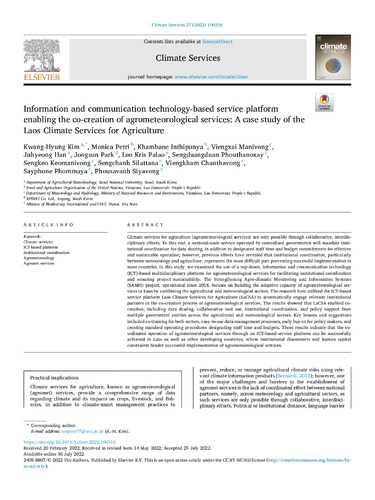Information and communication technology-based service platform enabling the co-creation of agrometeorological services: A case study of the Laos Climate Services for Agriculture
Climate services for agriculture (agrometeorological services) are only possible through collaborative, interdisciplinary efforts. To this end, a national-scale service operated by centralized governments will mandate institutional coordination for data sharing, in addition to designated staff time and budget commitments for effective and sustainable operation; however, previous efforts have revealed that institutional coordination, particularly between meteorology and agriculture, represents the most difficult part preventing successful implementation in most countries. In this study, we examined the use of a top-down, information and communication technology (ICT)-based multidisciplinary platform for agrometeorological services for facilitating institutional coordination and ensuring project sustainability. The Strengthening Agro-climatic Monitoring and Information Systems (SAMIS) project, operational since 2018, focuses on building the adaptive capacity of agrometeorological services in Laos by combining the agricultural and meteorological sectors. The research here utilized the ICT-based service platform Laos Climate Services for Agriculture (LaCSA) to systematically engage relevant institutional partners in the co-creation process of agrometeorological services. The results showed that LaCSA enabled co-creation, including data sharing, collaborative tool use, institutional coordination, and policy support from multiple government entities across the agricultural and meteorological sectors. Key lessons and suggestions included co-training for both sectors, easy-to-use data management processes, early buy-in for policy makers, and creating standard operating procedures designating staff time and budgets. These results indicate that the coordinated operation of agrometeorological services through an ICT-based service platform can be successfully achieved in Laos as well as other developing countries, where institutional disconnects and human capital constraints hinder successful implementation of agrometeorological services.

